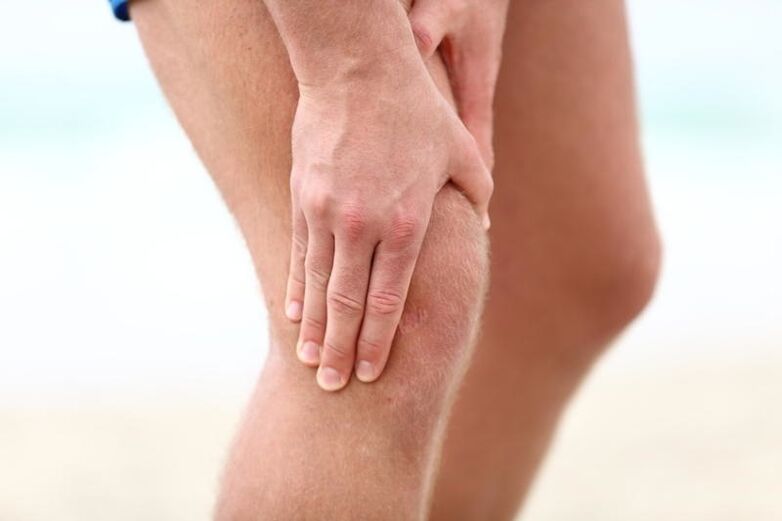
Severe knee pain means there is a problem with the joint. The peculiarity of the knee joint is that it takes the main load during movement and physical effort, so it is often injured. The affected knee is difficult to repair, so it is very important to take measures to eliminate the cause of pain in time.
The main reasons
Causes of knee pain can be:
- Injuries (acute injuries).They are the most common cause. They occur after a strong blow, excessive bending of the joint and a sharp fall on it. With mechanical injury there is sharp pain, swelling, there may be a burning sensation, numbness, changes in skin color in the joint area.
- arthrosis (gonarthrosis)is the destruction of joint tissue. Gonarthrosis is primary and secondary. The primary disease affects the elderly, while the secondary causes the consequences of injuries or is a complication of other diseases (e. g. , rheumatoid arthritis). Symptoms: pain and stiffness in the joint. With a long course of gonarthrosis, movements in the joint may become impossible.
- Arthritis (gonarthritis)- inflammatory disease. Recognizable signs: pain that increases with movement, increased joint size, fever in the affected knee, redness occasionally.
- Meniscopathy- damage to the meniscus, which is manifested by sharp pain. In the absence of appropriate treatment, the transition to a chronic form is possible, which leads to the development of osteoarthritis.
- Vascular diseases. Thrombosis or embolism (clogging) of the arteries that supply the knee joint leads to osteonecrosis of the articular cartilage, which makes walking impossible. There are no effective treatments for osteonecrosis. Arthroplasty of the affected joint is performed.
- periarthritis- This is an inflammation of the joint sac and the tissues that surround it. In periarthritis, there is pain in the knee joint without a clear localization. Periarthritis is most often a post-traumatic complication.
- Bursitisis an inflammation of the synovial sac (bursa). Bursitis can be caused by overuse of the joint, infection or injury. In this disease there is a strong constant pain, but freedom of movement is preserved.
- TendinitisIt is an inflammation of the ligaments and tendons. Symptoms include swelling and pain in the affected area. They increase with flexion-extension of the knee. Prolonged symptoms of tendinitis indicate tendinosis.
- Baker's cyst- this is a complication after trauma, gonarthrosis or hemarthrosis. Baker's cyst is a collection of joint fluid in the popliteal sac. The pathology is characterized by pain when bending the knee and a feeling of discomfort during movement. To avoid complications, it is advisable not to squat.
- Osteomyelitis of the leg bonesis a purulent disease associated with infection that results from hematogenous osteomyelitis, open fracture, or postoperative complication. The most common cause of infection is staphylococci.
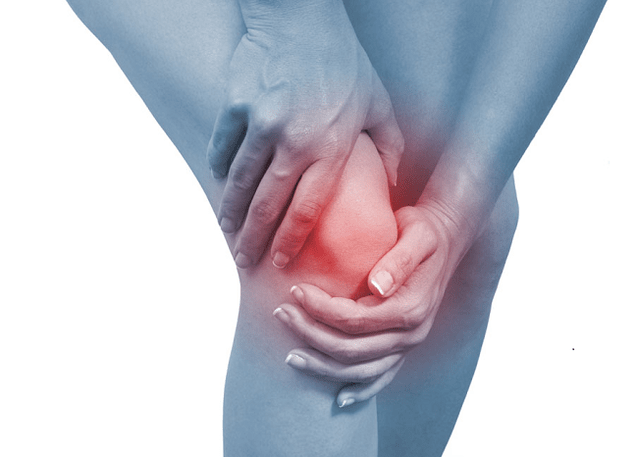
Types of pain
There are these types of knee pain:
- When squatting. It is usually caused by joint diseases, viral infection, lack of physical activity, poor nutrition. see the athlete. If your knees hurt when squatting, then the exercises should be stopped. In case of long-term and frequent pain, it is necessary to consult a doctor.
- When bending the legs. This is one of the most common joint problems. It is observed in Osgood-Schlatter disease, ligament and meniscus damage, Baker's cyst, infectious lesions, etc. When pain occurs, it is necessary to limit the load on the leg, refuse to play sports and wear comfortable orthopedic shoes.
- After running. Associated with diseases such as osteoarthritis, bursitis, synovitis, etc. In this case, the normal functioning of the joint stops, and under heavy loads it begins to collapse. It is necessary to carry out timely treatment of these diseases, otherwise complete loss of motor functions is possible.
- Crunching. If there is no swelling, pain and stiffness in movement, then there is nothing to fear. However, this symptom can be caused by a dangerous disease - osteoarthritis, in which the articular cartilage is damaged and severe pain appears. It is very important to start timely treatment of this disease.
Diagnosis
You can diagnose the cause of pain in the following ways:
- General blood test. It enables the detection of anemia, leukocytosis, etc.
- Blood chemistry. Detects an increase in uric acid in gout.
- X-ray study. This method allows you to detect bone pathology. It is used to diagnose fractures, osteomyelitis and osteoarthritis. X-ray studies have been supplemented by computed tomography (CT). Menisci, ligaments, bursae and other soft tissues are not visible on X-rays and CT scans.
- MRI (magnetic resonance imaging), NMRI (nuclear magnetic resonance imaging). This is modern research. With its help, pathology of the soft tissues of the joint (menisci, ligaments, etc. ) is diagnosed.
- Puncture bone biopsy. It is performed in the presence of suspected osteomyelitis or bone tuberculosis.
- Arthroscopy. It is performed for both diagnosis and treatment, for example, in meniscus injuries.
- Ultrasound (ultrasound examination). This is a screening study conducted in cases of suspected traumatic injuries, osteoarthritis, meniscus disease, etc. Ultrasound results should be checked by radiography (CT) and / or MR.
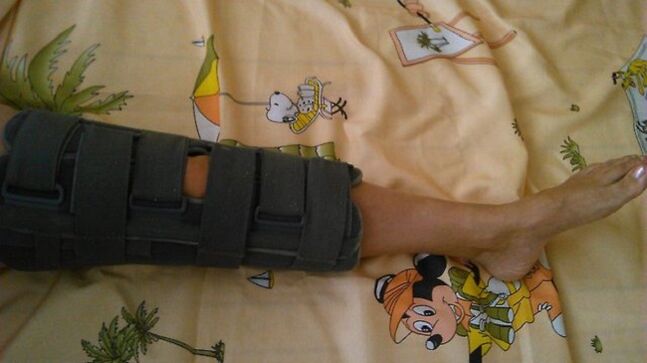
Treatment
Treatment should be comprehensive and include conservative methods and surgical intervention. Let's look at them in more detail:
conservative methods
During exacerbations, treatment should relieve pain and swelling, and then restore normal joint mobility. For the first time after an injury, moving without assistance is not recommended.
The basis of treatment is anti-inflammatory therapy. It involves the use of the following agents: nonsteroidal anti-inflammatory drugs, pyrazolone derivatives, indoleacetic acid derivatives, oxicam, glucocorticoids.
In order to strengthen the immune system, the following procedures are prescribed: cryopheresis, plasmapheresis, hemosorption, plasma filtration, immunostimulants.
The specific medicine and method of treatment is chosen by the attending physician.
Also, conservative treatment includes ice packs on the damaged area to relieve pain or hot compresses to improve blood microcirculation.
Hemarthrosis results in puncture of the joint and removal of blood accumulated due to trauma.
Also, conservative treatment includes physiotherapeutic methods: massage, therapeutic exercises and spa rehabilitation. If necessary, the doctor prescribes a special diet that provides for limited calorie content.
Chondroprotectors are used to nourish cartilage and reduce destructive processes.
The most common physiotherapy methods are magnetotherapy, laser therapy, cryotherapy, acupuncture.
In gonarthrosis, special shoes and knee protectors - orthoses - are used. These shoes contribute to the normalization of gait, and knee pads repair the affected joint.
Surgical intervention
If the required joint stability cannot be achieved after undergoing conservative treatment, surgical intervention is indicated.
The most common surgical techniques are arthroscopy and arthroplasty.
Arthroscopy is a technique that can alleviate joint pain and increase its mobility. This method of treatment not only eliminates the underlying disease, but also allows you to inject drugs into the joint cavity that reduce inflammation.
Doctor's advice
Hyaluronic acid preparations given intra-articularly have a pronounced therapeutic effect in osteoarthritis of the 2nd and even 3rd stage. The introduction of hyaluronic acid is considered an alternative to arthroplasty when it is not possible due to therapeutic contraindications. This is a medical manipulation, there are contraindications.
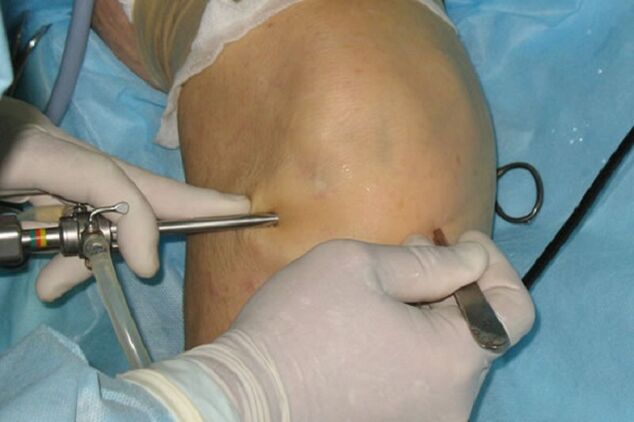
The technique is performed with such problems:
- meniscus and cartilage damage;
- ligament rupture;
- the presence of foreign bodies in the joint;
- rheumatoid arthritis;
- intraarticular fractures.
In the period of postoperative rehabilitation, it is recommended to strictly adhere to medical recommendations by performing therapeutic exercises, avoiding unreasonably early load on the extremities.
Endoprosthetics (arthroplasty) is an operation in which damaged parts of the knee joint are replaced with an artificial implant (endoprosthesis).
More than 95% of endoprostheses that are placed under compulsory health insurance function for 10-15 years, and then they need to be replaced. Today, far from all regions, endoprosthesis replacement, unlike primary surgery, can be issued with compulsory health insurance. Not all patients after 10-15 years are able to undergo another operation due to cardiovascular and other somatic risks. Therefore, it is not worth rushing with an endoprosthesis. I recommend resorting to this surgery only when all other treatment options have been exhausted.
Endoprosthetics are performed when the restoration of painless function of the knee joint is not possible by conservative methods and with the help of arthroscopy. After arthroplasty, purulent complications are possible. Antibiotics are prescribed for their prevention. After endoprosthetics, long-term rehabilitation of the patient is required (up to 6 months).
Folk remedies
Folk remedies can help relieve pain, but they should be done in parallel with conventional treatments.
When using folk remedies, be sure to consult a doctor.
Let's look at a few popular methods:
- Mast. For knee pain, prepare 1 tbsp. l. hypericum and 2 tbsp. l. yarrow, crushing them. Melt 1 tbsp in a water bath. l. vaseline. The grass is poured into hot Vaseline and rubbed until a homogeneous mass. This ointment should be rubbed on sore knees at night.
- A mixture based on rye seeds. You need to take 250 g of rye seeds, pour 2 liters of water over them and boil. After the mixture has cooled, strain and add 500 g of vodka, 1 kg of honey, 3 tsp. barberry root. The mixture is mixed well and left for 21 days in a dark place. It is recommended to use a mixture of 3 tablespoons. l. before meals. During the treatment, it is necessary to drink 9 liters of the mixture.
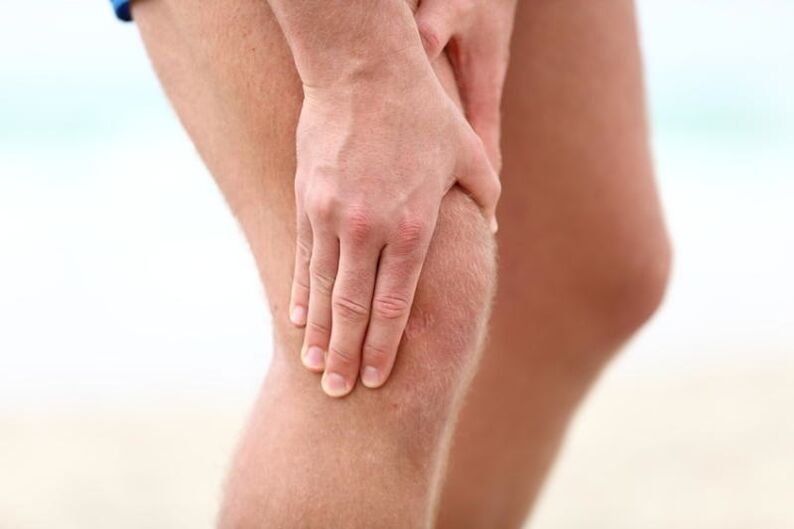
If you have knee pain, don’t panic. However, if the pain lasts for a long time, be sure to consult a doctor. This will avoid many troubles.



































